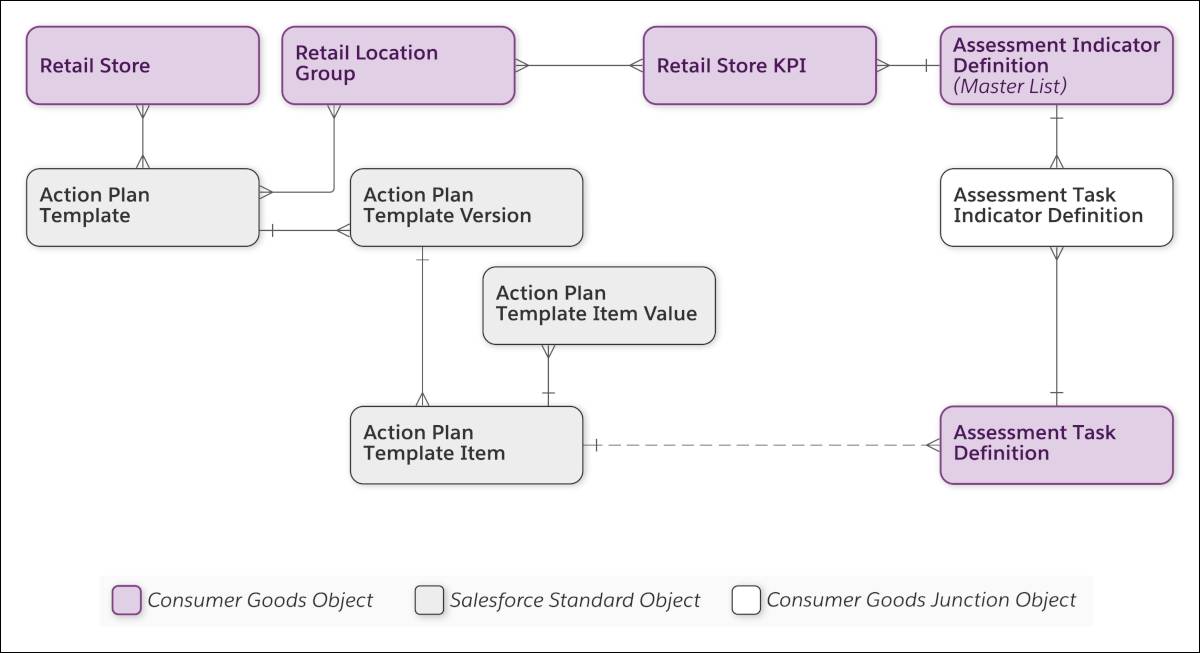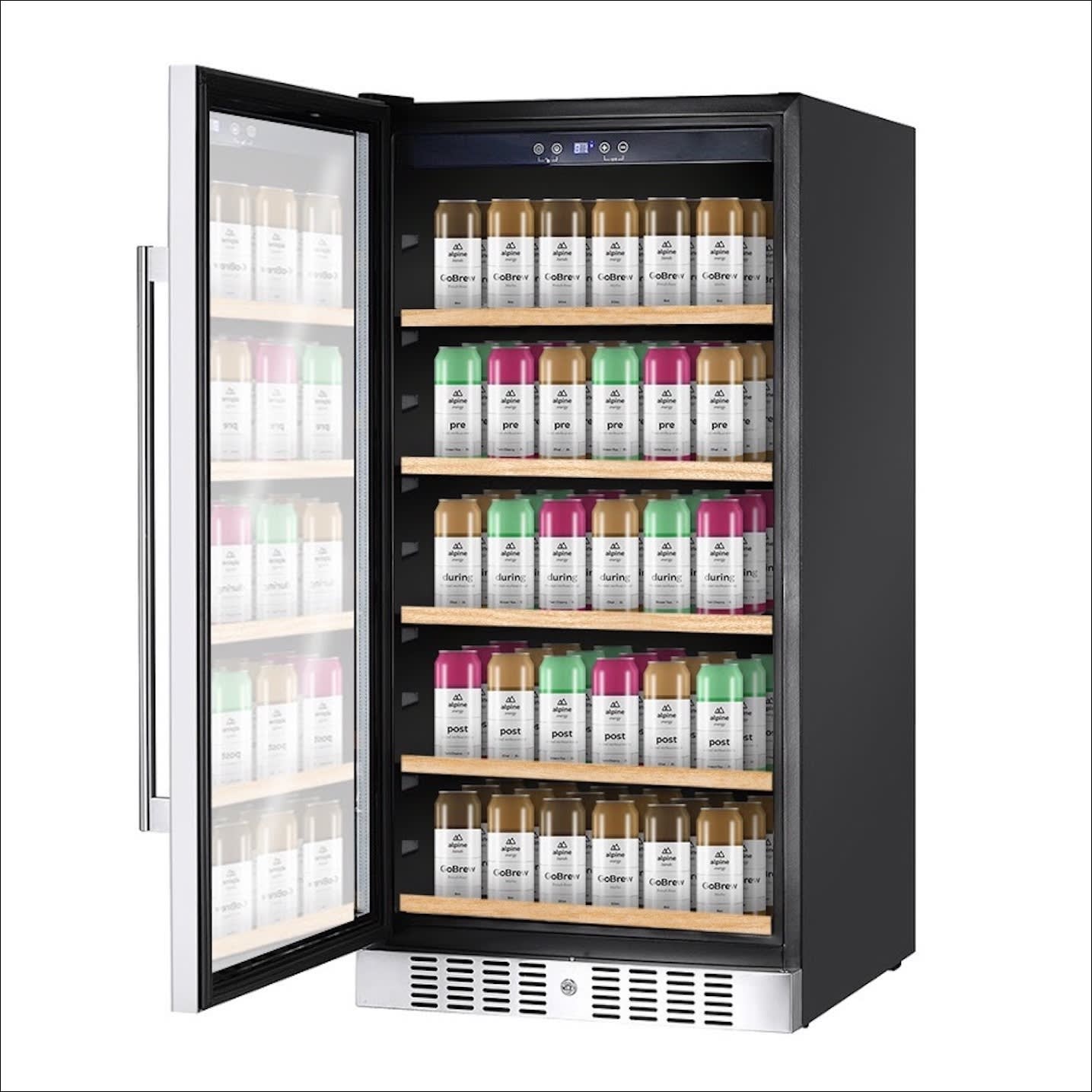Set Up Task Definitions and Action Plan Templates
Learning Objectives
After completing this unit, you’ll be able to:
- Set up assessment task definitions.
- Set up action plan templates.
- Relate tasks and metrics for visit planning and execution.
Create Tasks for Your Field Reps
Dorothea has successfully set up objects that help Alpine Group with its business planning and strategy. It’s now time to move on to the next big milestone in her data model journey: object setup for visit planning and execution. She starts with some questions: How do sales managers manage tasks and field rep visits? And how do reps capture data for metrics during their visits?
When a field rep visits a store, she performs certain activities related to the different aspects of visit execution as discussed in Unit 4. The metrics are already in place for Alpine Group with assessment indicator definitions, and targets are in place with retail store KPIs.
But Dorothea wants to create a data model that introduces a proper structure for sales managers to organize the tasks and for field reps to carry them out during visits.
She uses the following objects:
Standard objects:
- Action Plan Template
- Action Plan Template Version
- Action Plan Template Item
- Action Plan Template Value
Consumer Goods objects:
- Retail Store
- Retail Location Group
- Retail Store KPI
- Assessment Indicator Definition
- Assessment Task Definition
Consumer Goods junction object:
- Assessment Task Indicator Definition
Her assessment task definition and action plan template data model looks like this.

Assessment Task Definitions
Each retail activity that a sales manager defines is stored as a record in the Assessment Task Definition object. This object holds information on the name, description, category, and type of task. The actual activity that a field rep performs on the field is stored in the Assessment Task object, but more on that later.
The Assessment Task Definition object defines the type of task. Field reps at Alpine Group perform six distinct types of tasks. Dorothea reviews the Task Type in the Assessment Task Definition object to see if the types fit Alpine’s use cases. Then she creates a report of the task types and the key metrics to associate for each task type.
Here’s what her report looks like.
Table 1. Possible business scenarios related to task types and assessment metrics.
Alpine’s Use Case |
Task Type |
Possible Assessment Indicator Definitions |
|---|---|---|
|
Field reps visit stores to gather information on count of products or product categories in specific in-store locations such as shelves and end caps. Key metrics are tracked around optimum quantity of products and their overall availability. |
Inventory Check |
Inventory count of a product category (Number) Display price of a product (Decimal) |
|
To amplify shopper experience, field reps gather information on shelf displays and product arrangement. Key metrics are tracked around whether primary displays in stores have adequate number of Alpine product facings and desired share of shelf. |
Planogram Check |
Facings (Number) Share of shelf (Decimal) Competitor facings (Number) Voids (Number) Out of stock (Boolean) |
|
Field reps assess the impact of promotional activities in retail stores. They negotiate with store managers to place Alpine Group products on the shelf and compare promotional targets with how promotions are actually running. Key metrics are tracked around overall compliance, customer satisfaction, and so on. |
Promotion Check |
Product display units (Number) Locational compliance (Boolean) Overall promotion Compliance (Boolean) Customer reaction on new promotional offers (Text) |
Field reps place orders for products that are out of stock in retail stores. Shelves are always replenished to keep the Alpine Group presence prominent in stores. |
Order Creation |
Not applicable |
Field reps can gather feedback on Alpine products or customer satisfaction during visits. This task helps gather feedback from store staff and customers about promotions, inventory requirements, and product quality. |
In-Store Survey (Salesforce Surveys) |
Not applicable |
|
Any miscellaneous activity that doesn’t pertain to the above task types, is a custom task. Key metrics are tracked around maintenance and servicing for such assets. |
Other |
Condition of assets placed in stores compliant? (Boolean) |
Dorothea is now sure she knows how to create the different assessment task definitions based on the type of activity to be performed. She also knows the assessment indicator definitions that she can associate with each task type. She can always reuse metrics for multiple task definitions.
The only task type she wants to explore a bit more is the Other task type. She thinks Alpine Group has some use cases for this.
Track Your Assets
Each organization has unique business processes and metrics. Some of these processes may not fit the tasks discussed above. Certain tasks are not tied to planograms, promotions, orders, or surveys. You can use the flexible Other task type for such miscellaneous activities. For instance, Alpine Group wants to track the assets it places in each NTO store.
Dorothea knows there are two primary Alpine Group assets that require servicing and maintenance.
- Refrigerator displays for its summer coolers (Polar Glass Door 40 L)
- Customized rotating shelves for its popular activewear (3-ft gondola)
For the refrigerators, Alpine Group tracks how often they require maintenance and whether the temperature is optimum or not. For the gondolas, Alpine tracks whether the right products are displayed on them and whether they are damaged or not.

Here’s the good news: Dorothea can create a custom object or leverage an existing object in Salesforce. The Consumer Goods data model provides the flexibility to track these custom objects like any other standard object. She can define metrics, set up data, and associate tasks for these objects seamlessly. The Retail Store KPI object has a field called Custom Context. For the refrigerator, Dorothea can define the value for this field as Polar Glass Door 40 L and set targets like she does for any other object.
What’s Your Plan of Action?
Dorothea has defined the tasks through which field reps capture data during their visits. Her main aim is to understand how she can use the data model to capture repeatable tasks—improving collaboration and productivity. She looks at the following objects and their associations.
Action Plan Template
An action plan template provides a framework to reuse tasks across stores and visits. The Action Plan Template object has the following defining attributes.
- Name
- Description
- Action Plan Type (for Alpine Group, the relevant value is Visit Execution)
- Target Object (Visit is the target object for Alpine Group’s use case)
- Template Owner
Alpine primarily uses two action plan templates.
- One template contains tasks for in-store surveys and order placement.
- One template contains tasks for planogram checks, asset checks, promotion checks, and inventory checks.
The company can create more action plan templates as needed.
Action Plan Template Item
Each item in the action plan template refers to a task definition. Each action plan template can have a different set of tasks. For an action plan template item, Dorothea observes that there are two defining attributes that help sales managers organize and track activities better.
-
Is Required: This indicator on the Action Plan Template Item object defines whether the task or item is mandatory. For example, if Gustavo wants the promotion check to be a mandatory task, he marks the Promotion Check task as required.
-
Display Order: This determines the sequence number of the item in the template.
An action plan template is a primary list of items. For Consumer Goods Cloud, an action plan template can have more than one item with the same assessment task definition. So for example, a sales manager can create an action plan template and add the following items to it.
- Inventory check for Alpine energy bars
- Inventory check for Alpine Mint Summer Cooler
- Promotion check for launch of new product
- Planogram check for missing products on primary shelves
Alpine Group can create multiple action plan templates to cluster tasks that are common across stores. When the time comes for visit creation, Gustavo and the other sales managers can simply pick and choose which template best suits a visit and associate it to a visit. They don’t have to manually add individual tasks for each visit.
It’s Time to Execute
Dorothea has done everything that’s required to organize tasks and metrics for visit planning and execution. She’s starting to see the entire data model as a cohesive unit, but she still has to untangle a few more knots. She has two primary queries.
- What information does the Visit object hold?
- How can sales managers view real-time transactional data that their reps capture in the field?
Resources
